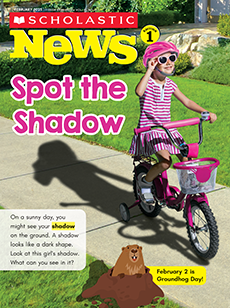A guide for using our resources
Students will describe what nocturnal animals do at night.
Vocabulary: fiction, hunt, joeys, swoop, nocturnal
Science Focus: animal behavior
CCSS (and states that have similar standards): RI.1.1 key details; RF.1.2 phonological awareness; RF.1.3 phonics and word analysis; SL.1.1 collaborative conversations; L.1.2 standard English capitalization, punctuation, and spelling; L.1.6 use new vocabulary; RL.1.1 key details; RL.1.5 fiction vs. nonfiction; W.1.8 gather information
Simple, spectacular ideas to boost your lessons.
Paired Text: Little Owl’s Night by Divya Srinivasan
Paired Text: Little Owl’s Night by Divya Srinivasan
- This charming book follows an owl as it visits its nocturnal animal friends, including ones that appear in the article. If you’d like, use it for a lesson about fiction and nonfiction. Point out ways you can tell the book is fiction (the story is made-up; the animals talk) and the article is nonfiction (it has facts; the animals do not talk).
Vocabulary: nocturnal
Vocabulary: nocturnal
- Children learned the word nocturnal from the article. Now they can act it out to help it stick! Remind children that nocturnal means awake at night. Tell them that they will pretend to be nocturnal animals. Turn off the lights and have children act like nocturnal animals at night. When you turn on the lights, they can pretend to sleep!
Word Hunt: Plural Nouns
Word Hunt: Plural Nouns
- Instruct children to look for the plural nouns in the article that end with s. Work together as a class to find them all!
Hands-On Activity: My Forest Night Scene
Hands-On Activity: My Forest Night Scene
Skill: writing, drawing, fine-motor skills
Materials: My Forest Night Scene skills sheet, scissors, glue, crayons or colored pencils
- With this activity, students can imagine and create their own night scene!
- Give each child a copy of the skill sheet. Have students cut out the nocturnal animals at the bottom of the sheet.
- Ask students to think about what they would like to show in their night scene: a moon, trees, a log, a pond, etc.
- Next, have students paste at least two nocturnal animals into the blank box. They can then draw their forest night scene around the animals and color them in.
- Ask students to describe their picture. Is the frog jumping into the pond? Is the bat fl ying near the moon? Have them write a sentence about it!
